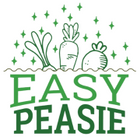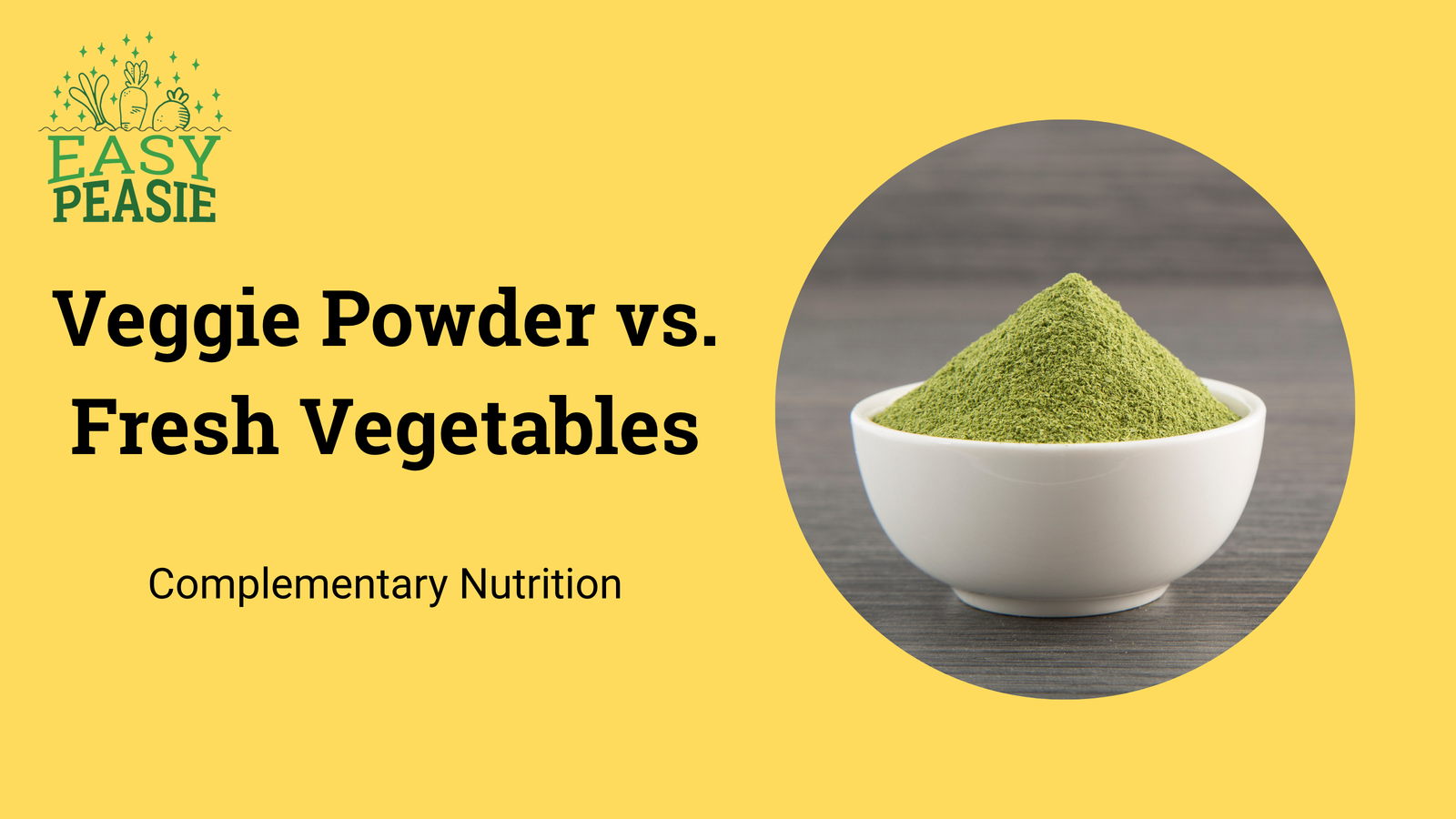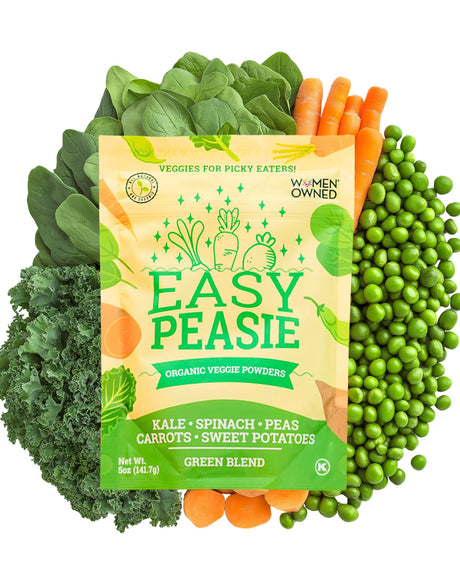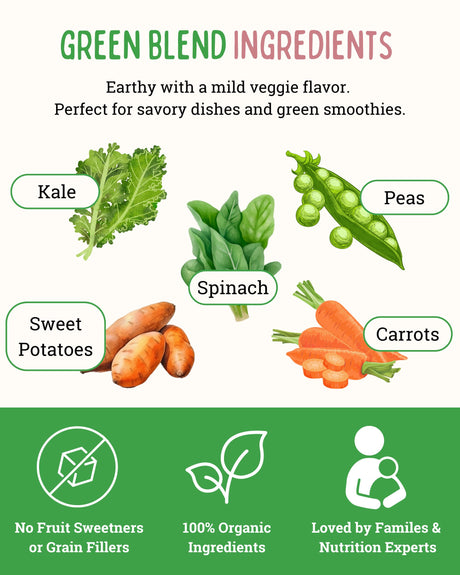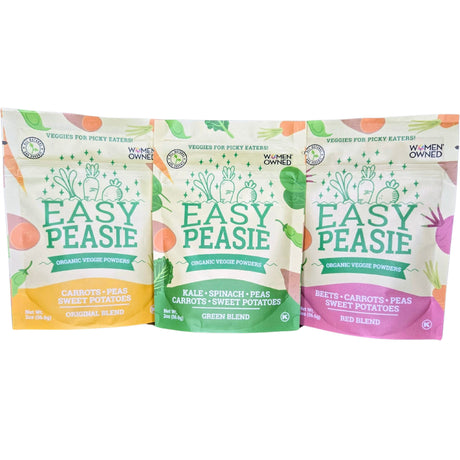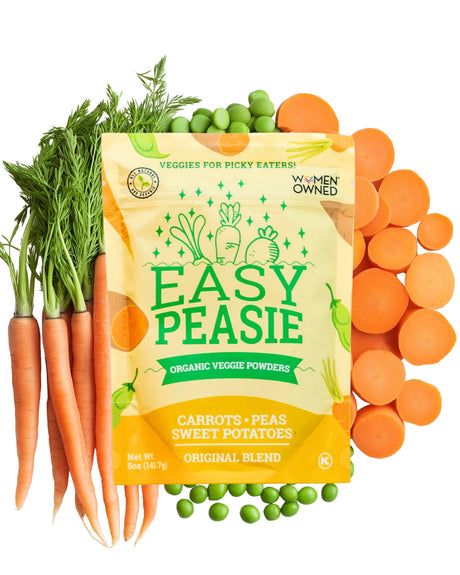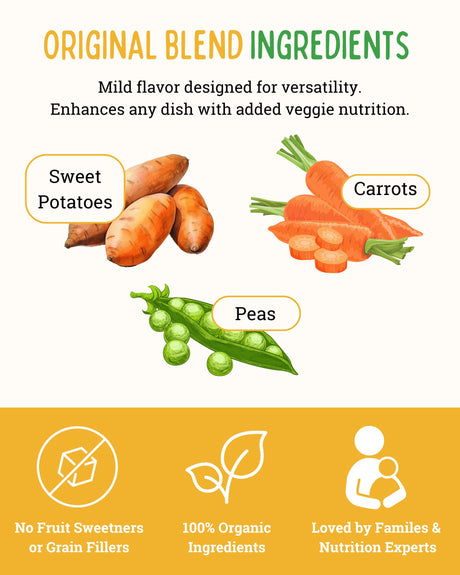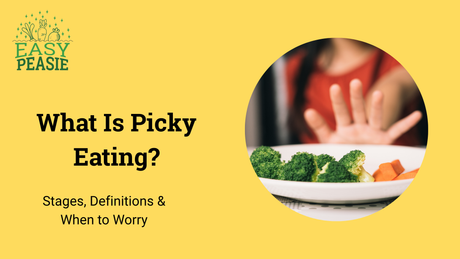Let's be honest: you've probably found yourself staring at wilted vegetables in your fridge while your child happily eats mac and cheese for the fourth day in a row. The guilt creeps in as you wonder if they're getting any real nutrition, and you find yourself googling "veggie powder" at 11 PM, questioning whether it's "real" enough.
If you're nodding your head right now, you're definitely not alone. Many parents find themselves caught between wanting to provide fresh, whole vegetables and the reality of feeding a child who treats anything green like it's personally offensive.
Here's what we've learned from thousands of families navigating picky eating: fresh vegetables and veggie powders aren't competing against each other – they're actually powerful partners in your family's nutrition journey. Understanding how they work together can take the pressure off mealtime battles while ensuring your child gets the nutrition they need.
Understanding the Fresh vs. Powder Question
The "Real Food" Concern
Let's address the elephant in the room first. Many parents worry that using veggie powder somehow means they're "giving up" on fresh vegetables or taking a shortcut that isn't as nutritious.
This concern is completely understandable. We're constantly told that fresh is best, and there's definitely truth to the benefits of whole, fresh vegetables. But here's what's important to understand: veggie powder made from real vegetables IS real food – it's simply vegetables in a different form.
When vegetables are properly dried and ground into powder, the nutrients don't magically disappear. The fiber, vitamins, minerals, and antioxidants are concentrated, not eliminated. Think of it like raisins versus grapes – both are real fruit, just in different forms.
Why This Matters for Picky Eaters
For families dealing with extreme picky eating, the question isn't really "powder or fresh?" – it's "some vegetables or no vegetables?" When your child's accepted food list includes five items and none of them are vegetables, veggie powder can be the bridge that ensures they're getting real vegetable nutrition while you work on the longer journey toward whole food acceptance.
This is especially crucial for children with:
- Sensory processing sensitivities
- Autism spectrum disorders
- ARFID (Avoidant/Restrictive Food Intake Disorder)
- Extreme texture aversions
- Very limited accepted food lists
The Science Behind Vegetable Nutrition
What Happens When Vegetables Are Processed
Understanding how veggie powder is made can help ease concerns about whether it retains nutritional value. Quality veggie powders are created through a process called spray drying or freeze drying, which removes water while preserving nutrients.
What's Preserved:
- Vitamins and minerals (most remain intact)
- Fiber content (concentrated in powder form)
- Antioxidants and phytonutrients
- Natural vegetable compounds
What Changes:
- Water content (removed during processing)
- Some heat-sensitive vitamins may be slightly reduced
- Texture and visual appeal of whole vegetables
- The eating experience and sensory input

Nutritional Density Comparison
Here's where veggie powder actually shines: Two tablespoons of quality veggie powder can provide the equivalent nutrients of a full cup of fresh vegetables. For a child who struggles to eat any vegetables, this can be a game-changer.
Two tablespoons of Easy Peasie Original Blend contain the concentrated nutrition of carrots, peas, and sweet potatoes – vegetables that provide beta-carotene, fiber, potassium, and other essential nutrients. For a child who won't touch a carrot but will eat mac and cheese with a subtle veggie boost, this represents real nutritional progress.
Fresh Vegetables: The Gold Standard (When Possible)
The Unique Benefits of Whole Vegetables
Fresh vegetables offer benefits that can't be replicated in powder form, and these advantages are important to acknowledge:
Sensory Development:
- Teaches children to recognize different textures, colors, and flavors
- Develops chewing skills and oral motor development
- Provides important sensory input for developing palates
Fiber and Satiety:
- The bulk of whole vegetables helps with feelings of fullness
- Promotes healthy digestion through varied fiber types
- Teaches appropriate portion recognition
Life Skills:
- Learning to prepare and cook fresh vegetables builds independence
- Understanding where food comes from and how it grows
- Developing a relationship with whole foods
When Fresh Vegetables Work Well
For many families, fresh vegetables can be successfully incorporated when:
- Children are already eating a variety of foods
- Sensory sensitivities are minimal
- Family meals are generally accepted and enjoyed
- There's time for gradual exposure and cooking together
Veggie Powder: The Strategic Support
Where Veggie Powder Excels
Veggie powder isn't trying to replace fresh vegetables – it's filling crucial gaps and providing support where fresh vegetables can't reach.
Immediate Nutrition Security: When you're worried about your child's nutritional intake, veggie powder provides peace of mind that they're getting real vegetable nutrition today, not someday when they might accept broccoli.
Stealth Integration: For children with extreme food aversions, the ability to add nutrition to already-accepted foods without changing taste, texture, or appearance can be life-changing.
Veggie Palate Priming: Regular exposure to vegetable compounds through powder can actually help prepare a child's palate to eventually accept whole vegetables. It's like gentle, consistent exposure without the pressure.
Special Circumstances:
- Travel situations where fresh vegetables aren't available
- Busy weeks when meal prep falls apart
- Medical situations requiring guaranteed nutrition intake
- Feeding therapy support when working with professionals

Real-World Applications
For Families with General Picky Eating: Parents can mix Easy Peasie into their child's favorite pasta sauce, knowing they're providing real vegetable nutrition while continuing to offer small portions of fresh vegetables alongside familiar foods. The powder ensures nutrition security while they work on expanding food acceptance.
For Families with Special Needs/ARFID: When a child with autism has been eating only five foods for months, adding veggie powder to their accepted foods provides essential nutrition without triggering sensory overwhelm. This nutritional foundation supports their development while feeding therapy works on increasing food acceptance.
The Complementary Approach: Using Both Strategically
The Bridge Strategy
Think of veggie powder as a bridge, not a destination. It can provide the nutritional foundation that allows you to take pressure off fresh vegetable battles and create positive food experiences instead.
How This Works:
- Nutrition Security: Veggie powder ensures your child gets vegetable nutrition regardless of what fresh foods they accept
- Reduced Pressure: Knowing their nutrition is covered allows you to offer fresh vegetables without desperation or pressure
- Positive Associations: Fresh vegetables can be explored playfully when they're not carrying the weight of your child's entire nutritional needs
- Gradual Progress: Some children eventually transition from powder to whole vegetables as their palates develop
Practical Implementation
Daily Nutrition Foundation: Use veggie powder in accepted foods to create a reliable nutritional baseline. This might look like:
- Powder stirred into morning oatmeal or yogurt
- Powder mixed into familiar pasta sauces or soups
- Blended into smoothies or baked goods
Fresh Vegetable Exploration: With nutrition security handled, offer fresh vegetables in low-pressure ways:
- Small portions alongside familiar foods
- Letting children help with washing or simple prep
- Family-style serving where they can choose their own portions
- Fun activities like farmers market visits or simple gardening
Addressing Common Concerns
"Am I Teaching Bad Habits?"
One worry parents express is whether using veggie powder teaches children that they don't need to eat "real" vegetables. Research on food acceptance suggests the opposite is often true.
Why the Bridge Approach Works:
- Regular exposure to vegetable compounds can increase acceptance over time
- Removing pressure around fresh vegetables often leads to more willingness to try them
- Children who aren't nutritionally deficient often have more energy to explore new foods
- Positive mealtime experiences build better food relationships
"Is It Just Expensive Supplements?"
Quality veggie powders made from whole vegetables are fundamentally different from synthetic vitamin supplements. They contain the full spectrum of compounds found in vegetables, including fiber, antioxidants, and phytonutrients that work together synergistically.
Quality Standards for Veggie Powders:
- 100% vegetables with no added salt, sugar, or artificial ingredients
- Non-GMO and kosher certified
- Made in the USA with careful processing to preserve nutrients
- Third-party tested for purity and nutritional content
"What About Cost?"
When you calculate the cost of fresh vegetables that get thrown away versus veggie powder that gets consumed, the economics often favor the powder approach for picky eating families.
Cost Considerations:
- No food waste with veggie powder
- Concentrated nutrition means smaller amounts needed
- Can reduce anxiety and stress around meal planning
- May decrease the need for multiple specialty foods
When to Choose What
Fresh Vegetables Are Ideal When:
- Your child already eats some vegetables willingly
- You have time for meal prep and gradual exposure
- Sensory sensitivities are manageable
- Family enjoys cooking and eating together
- Child is interested in food exploration
Veggie Powder Is Essential When:
- Child has extremely limited accepted foods
- Sensory sensitivities make fresh vegetables overwhelming
- You're working with feeding therapists on food acceptance
- Travel or schedule makes fresh vegetables impractical
- Medical concerns require guaranteed nutrition intake
- Fresh vegetable battles are causing family stress
The Sweet Spot: Using Both
Most families find success using both approaches strategically:
Short-term: Veggie powder provides immediate nutrition security and peace of mind Long-term: Fresh vegetables remain the goal for sensory development and life skills Daily reality: Both work together to meet your family's needs without added stress
Making It Work for Your Family
Starting with Veggie Powder
If you're new to veggie powder, start slowly and build confidence. Choose one accepted food and add a small amount of mild-flavored powder. Start with less than you think you need – success builds confidence. If the first integration goes well, try adding powder to a second accepted food or experiment with different applications like smoothies, baked goods, or sauces.
Continuing Fresh Vegetable Offers
While using veggie powder for nutrition security, maintain gentle exposure to fresh vegetables. Include small portions on the plate without expectation, let children help with washing or simple prep, eat fresh vegetables yourself without commenting on whether they try them, and share fun facts about vegetables without pressure to eat them.
Celebrating Progress
Small Wins with Powder:
- Child doesn't notice the addition to their favorite food
- Peace of mind about nutrition intake
- Reduced stress around meal planning
Small Wins with Fresh Vegetables:
- Child touches or smells a vegetable without eating it
- Willing to have vegetables on their plate
- Takes a tiny bite or shows interest in vegetable preparation
The Long-Term Perspective
Food acceptance is a long-term developmental process, not a short-term problem to solve. Some children accept new foods quickly, others take years of gentle exposure. Veggie powder allows you to support nutrition while respecting your child's developmental timeline.
Research shows it can take 10-15 exposures before a child tries a new food, pressure actually decreases food acceptance, and nutritional security allows children to explore from a place of safety.
Your Action Plan: Finding the Right Balance
Week One: Establishing Your Foundation
If choosing veggie powder first:
- Select one accepted food for powder integration
- Start with small amounts and mild flavors
- Continue offering fresh vegetables without pressure
If focusing on fresh vegetables:
- Identify which vegetables your child shows any interest in
- Plan low-pressure exposure activities
- Keep veggie powder as backup for nutrition security
Week Two: Building Confidence
Expand successful strategies, try new approaches, and celebrate any signs of progress, however small.
Week Three: Creating Your System
Develop your family's unique approach by establishing which foods will regularly include veggie powder, creating a routine for offering fresh vegetables, and planning backup strategies for difficult days.
Moving Forward with Confidence
Remember: Progress, Not Perfection
Whether you're using veggie powder, fresh vegetables, or both, the goal isn't perfection – it's progress toward a healthier, happier relationship with food for your whole family.
Some days your child will surprise you by trying a fresh vegetable. Other days they'll reject everything except their three safe foods. Both scenarios are normal parts of the journey, and veggie powder ensures that nutrition isn't compromised during the challenging phases.
Trust Your Family's Process
Every family's journey with food and nutrition looks different. Some children move quickly from veggie powder to fresh vegetables. Others rely on powder for years while slowly expanding their fresh food acceptance. Both paths are valid and can lead to healthy, well-nourished children.
The most important thing is finding an approach that reduces stress around family mealtimes, ensures your child gets proper nutrition, supports your child's individual development, and builds positive associations with food and eating.
Your Next Steps
This week: Choose one small step to implement, whether it's trying veggie powder in an accepted food or offering fresh vegetables in a new way.
This month: Build on what's working and adjust what isn't, remembering that small changes create lasting results.
You're not choosing between "good" nutrition and "acceptable" nutrition – you're creating a comprehensive approach that meets your child where they are while supporting their growth and development. Fresh vegetables and veggie powder can work together to ensure your child gets the nutrition they need while building positive relationships with food.
Veggie powder blends are designed to support families on this journey, providing the concentrated nutrition of real vegetables in a form that works for children with various eating challenges. Whether you use them as a bridge to fresh vegetables or as a long-term nutrition strategy, you're giving your child real vegetable nutrition and yourself peace of mind – and that's a win for everyone.
Disclaimer: This article is for educational purposes only and does not constitute medical advice. Always consult with your child's healthcare provider for concerns about eating patterns, growth, or development.
